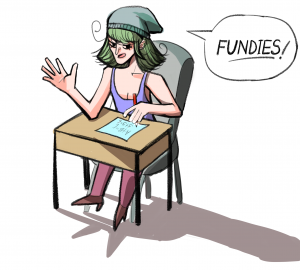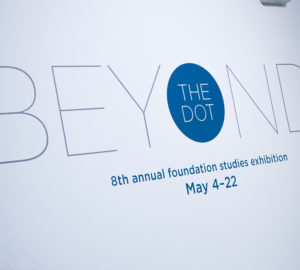by Katelyn Betts, contributor
The start of every career needs a good foundation, which is why SCAD has created the Foundations Studies program to give students a basic education in visual art. SCAD, being an art school, has established a basic set of art classes that all students are required to take, which makes sense and gives students a good opportunity to learn new skills. However, not all students feel that Foundation Studies are entirely beneficial to them.
It is inevitable that different majors will gain more from Foundation Studies than others. Majors such as illustration, animation, sequential art and graphic design are more fully involved with visual arts than majors such as writing, fashion marketing and television production. Kevin Behan, second-year writing major says “I’ve found the Foundation Studies to be almost depressing to go through. I understand there’s a difference in skill levels. But I never get a chance to show off what I can do — how I’m artistic.” Valerie Lookingbill, first-year writing major, says “Foundations Studies are helping to improve the skills of the visual majors, making their four years meaningful while I have to wait to take classes that relate to my field of study. I’m not gaining the skills and the knowledge that are directly applicable to my major from the beginning while other majors are.”
Feelings toward Foundation Studies might be different if the Foundation requirements were adjusted for each major. Jordan diPirro, first-year television production major, says, “I do think that some of the Foundation Studies need to be reevaluated with each major. Some of the courses that are required before going on to major classes do not make sense. I still don’t understand why writing majors need to take color theory when all they will be typing in is black and white.” Offering a variety of choices within the Foundation Program seems to be a popular option. “I think Foundations Studies should take into consideration one’s major … Sure, everyone taking Color Theory, Drawing and Design I is a good idea, but ‘advanced’ subjects like 3D Design, Design III (Time) and Drawing II are absolutely useless to some majors. I would like alternatives to these things. Maybe just give us more electives so we can choose where we want to go instead of being forced into paying for a class we will never enjoy, involving skills we will never use again,” says Behan.
Not all students have had negative experiences with the Foundations Studies, however. Lookingbill says, “I’ve gained new experiences with Foundations. I’ve gotten to experiment with different art forms and materials, things I wouldn’t have done otherwise.” In addition to being able to experiment with new medias, Foundations give students a chance to meet students in different majors. Behan says, “I made friends in majors that I would otherwise never know. It’s a great way to start having students make connections.” He is not the only one with this view. “I enjoyed how during my Foundations classes all the majors are put together, allowing everyone to meet. I have also made art that I never would have thought that I could before,” says di Pirro.
While there are benefits to the Foundations Program, many students feel that the classes they are required to take as a part of Foundations are not relevant to their majors and would like to see more options when it comes to the classes they take in their first and second years.



























